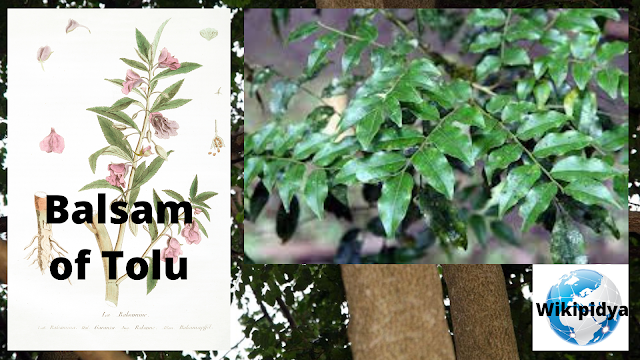Balsam of Tolu, Description and Uses and benefits of Tolu balsam
Balsam of Tolu
Description
Colombia, Peru, Venezuela, Argentina, Brazil, Paraguay, and Bolivia are among the countries that are home to the tall tree that yields the plant known as tolu balsam. Because it was once shipped from Peru, although this is no longer the case, this herb is also known as the balsam of Peru. The most valuable part of this tree is its resin, which may be obtained by clicking on it in a similar fashion to how one gathers the beneficial traits from a rubber tree. The gum from the tree then transforms into a balsam. El Salvador, Colombia, and Venezuela are currently the top exporters of tolu balsam.
Uses and benefits of Tolu Balsam
The leaves of tolu balsam were first used to cure common illnesses such as external wounds, asthma, colds, flu, and arthritis by aboriginal communities in Mexico and Central America. Native Americans believed the bark to be most effective for lung conditions and colds, while others used it as an underarm deodorant when it was powdered. Tolu balsam was commonly used by tribes from the rainforest to treat wounds, abscesses, asthma, bronchitis, catarrh, headaches, rheumatism, sores, and sprains as well as TB and other bacterial and viral infections.
The Europeans were the ones who requested this technique due to the growing popularity of this herbal plant, and soon the Germans followed suit by using it for medicinal purposes. They discovered that tolu balsam was effective against germs, fungi, and parasites, so they started using it right once to treat conditions like scabies, ringworm, lice, small wounds and sores, bed sores, and diaper rash. To treat wounds, ulcers, and scabies, it is now more frequently utilized in topical ointments.
It may be found as a natural scent in soaps, cleansers, creams, lotions, and fragrances as well as in feminine hygiene sprays, anti-dandruff shampoos, and hair tonics. The United States wanted tolu balsam to be used in their country as well in the early 1800s, but they mostly utilized it for respiratory aids, cough suppressants, syrup lozenges for sore throats, and vapor inhalers for shortness of breath.
Tolu balsam is mostly used to flavor chewing gum, soft beverages, sweets, and cough syrups because of its vanilla-like flavor and aroma. In the US, tolu balm is now commonly accessible. Small vials of the gum's essential oil are available for purchase and are applied topically in aromatherapy. The scent is regarded as soothing and restorative. It is helpful for meditation and relaxation, which is why it has gained a lot of traction in the aromatherapy community. Tolu Balsam is perfect for exotic flower perfumes because of its distinctive aroma.
Finally
Rashes, eczema, and skin parasites including scabies, ringworm, and head lice are often suggested for topical usage. Tolu Balsam is a sensitizing oil, which means it is more likely to irritate or trigger an allergic reaction to the skin in persons who are already allergic to plants and herbs than in other herbal oils.

